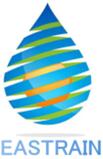|
|
Quality Management / Testing / Automation发表时间:2018-07-09 00:00
The purpose of software quality management is to ensure the quality of software development by analyzing quality factors and quality objectives, developing appropriate quality plans, and integrating technical review, software testing, quality assurance, and defect (or problem tracking). Key activities and processes The key activities of the software quality management process are “Development of Quality Planning”, “Technical Review”, “Software Testing”, “Quality Assurance”, “Defect Tracking and Problem Tracking”. Defects and problems found in technical reviews, software testing, and quality assurance activities are managed using defect tracking tools and problem tracking tools. Technical review The purpose of the technical review is to discuss the review of work results through peer experts, to identify defects in the work results as early as possible, and to help developers eliminate defects in time, thus effectively improving the quality of products. The main benefits of the technical review are: • Improve product quality by eliminating defects in work products. • Technical reviews can be performed at any stage of development, and the sooner the software can be run, the sooner the defect is eliminated, the lower the development cost. • Developers can get help and guidance from peer experts in a timely manner, which will undoubtedly deepen their understanding of the work results, better prevent defects, and improve development productivity to some extent. In theory, in order to ensure the quality of the product, all work results of the product should be subject to technical review. In reality, in order to save time, people are allowed to selectively conduct technical reviews of work results. The technical review plan should be determined when developing a quality plan. Technical review is a group activity. Generally, the organization does not have a full-time technical reviewer. When a technical review is required, the organization will be temporarily organized. Quality personnel should participate in important technical review meetings, which not only supervises the technical review, but also deepens the understanding of the work results. software test The purpose of technical review and software testing is to eliminate software defects. The main differences between the two are: (1) the former does not need to run the software, the reviewers and authors put the work results on the desktop to discuss; (2) the latter must To run the software to find defects. Technical reviews are performed prior to software testing, especially during the requirements development and system design phases. In comparison, the amount of software testing is usually larger than the technical review, and more defects are found. The main tasks of software testing are: • Developing a test plan • Designing test cases • Performing tests • Defect tracking • Eliminating defects Quality assurance QA: Quality Assurance The essence of quality assurance: Check whether the “work process and work results” of the project meet the established specifications. The results of the work in conformity with the norms are not necessarily high-quality, but the results of the work that are obviously not in conformity with the norms are unqualified. The main points of quality assurance: find out the work process and work results that are obviously not in conformity with the norms, and promptly guide the developers to correct the problems, do not nitpick or check them in irrelevant places. Quality personnel should record immediately if they find quality problems while performing quality assurance work. It's best to use the issue tracking tool (or defect tracking tool) to help increase productivity. Quality personnel first try to solve the quality problems that have been discovered within the project, and negotiate with the project members to give solutions. The quality problems that are difficult to solve within the project are given by the superiors. Develop QA/QC framework and test content: • Engineering unit testing framework • Automated build and release structure • QA/QC white box and black box test, user acceptance test • System level end-to-end testing • QA/QC automation framework and scripts |
